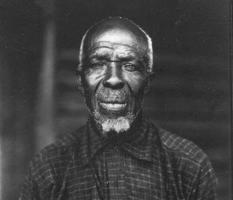 On Tuesday, a reporter in Alabama announced that he believed that he had found the burned wreckage of the schooner Clotilda, the last vessel to carry slaves to the United States. The wreckage was exposed following a winter “bomb cyclone” weather front, which caused extremely low tides in the area, exposing the wreckage. There is no firm confirmation that the wreckage is that of the schooner Clotilda, but the location, dimensions, and condition of the wreck strongly suggest that the wreckage is the slave ship. Clotilda was a two-masted schooner, 86 feet long, 23 feet of beam, and had a copper-sheathed hull. The wreck was found on the Mobile River just off Twelvemile Island by Ben Raines of AL.com.
On Tuesday, a reporter in Alabama announced that he believed that he had found the burned wreckage of the schooner Clotilda, the last vessel to carry slaves to the United States. The wreckage was exposed following a winter “bomb cyclone” weather front, which caused extremely low tides in the area, exposing the wreckage. There is no firm confirmation that the wreckage is that of the schooner Clotilda, but the location, dimensions, and condition of the wreck strongly suggest that the wreckage is the slave ship. Clotilda was a two-masted schooner, 86 feet long, 23 feet of beam, and had a copper-sheathed hull. The wreck was found on the Mobile River just off Twelvemile Island by Ben Raines of AL.com.
The international slave trade had been illegal in the United States since 1807, but that didn’t stopped the slavers. Local lore suggests that the voyage of the Clotilda began as a wager between Timothy Meaher, a wealthy Alabama ship and shipyard owner, and friends from New England, that he could smuggle slaves from Africa into the United States without being caught.
Maeher was not alone in his slave smuggling venture, however. In 1858, the racing yacht Wanderer was outfitted for a slaving voyage and returned to Jekyll Island, Georgia with a cargo of 409 Africans. Not all slaving ventures were successful. The slave ship Erie, under the command of Nathaniel Gordon, was apprehended by the USS Mohican fifty miles off the Congo in 1860, with 897 Africans crammed aboard, 563 of which were children. Captain Gordon would be hanged for his crimes in 1862.
In the autumn of 1859, or the summer of 1860, depending on the source, Captain William Foster brought the schooner Clotilda into Mobile Bay with a cargo of 110-160 captives from West Africa. Federal authorities had been tipped off to the arrival of the schooner. Fearful of criminal charges, Captain Foster arrived in the port at night and transferred his cargo to a riverboat, then burned and scuttled the Clotilda.

Cudjoe Kazoola Lewis
Of the more than 100 Africans from the schooner, Meaher kept around 30 for himself. One of the Africans was Cudjoe Kazoola Lewis. After the Civil War, Lewis and other Africans from the Clotilda established a community at Magazine Point, north of Mobile, Alabama, which became known as Africatown.
Cudjo Lewis was 19 when he was kidnapped from his village in Benin and taken with others from his village to the slaving port of Ouidah to be sold. After the end of the Civil War, Lewis and the other the Clotilde captives petitioned the government to be returned to their homeland but were refused. Their settlement in Africatown developed as a self-contained community where African customs were upheld and tribal languages spoken.
In the early part of the 20th century, Cudjo Lewis became an unofficial spokesman for the community. He was interviewed by a number of historians and writers about his life in Africa and the United States. Cudjo Lewis died at the age of 94, on July 17, 1935. He was the last survivor of the Clotilda and the last known survivor of the Atlantic slave trade between Africa and the United States.
In 1959, a memorial bust of Lewis was erected in front of Africatown’s Union Missionary Baptist Church atop a pyramid of bricks made by the Clotilde captives. In 2002, the bust was stolen. In February 2017, a new cast iron bust by April Livingston of the Africatown hero, Cudjoe Lewis, was unveiled in the courtyard of Union Missionary Baptist Church in Mobile.
Later this year, Barracoon, Zora Neale Hurston’s novel based on her interviews with Cudjoe Lewis, initially publsihed in 1999, will be reissued by Harper-Collins.
Wreck found by reporter may be last American slave ship, archaeologists say

The Atlantic slave trade continued for years after the Clotilde or Clotilda made the last voyage into the United States. American built and owned clipper ships, and even steamships, under foreign flags made made runs into Cuba and Brazil during and after the Civil War.